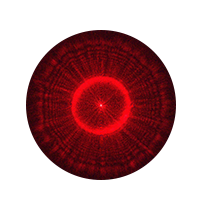ABOUT THE TECHNOLOGY
This patented technology allows for an effective and quick decoding of detailed information on microorganisms, using their optical and morphological properties.
Our breakthrough microbiological analysis technology enables fast and efficient identification of microorganisms. Solutions for determining microbiological contamination of products are key for a number of industries, including the cosmetics and the food industry. Meanwhile, there are currently no solutions dedicated for microbiology in the dynamically growing cosmetics market, the estimated worth of which in the year 2020 will come to reach USD 675 billion (according to the Research & Markets forecast).
In order to meet the expectations and challenges of the industry, Avlee 650 device utilizes the laser diffraction method patented by Bioavlee. It allows to obtain a “fingerprint” of the studied microorganisms by diffracting light on the colonies of microorganisms.
Our solution ensures:
- highly accurate, automatic identification of microorganisms in the tested sample thanks to self-learning algorithms it implements,
- an analysis carried out on a general medium – reduction of waste,
- shorter testing time than in the case of existing solutions.
How does it work?
The Bioavlee identification technology utilizes the fact that microorganism colonies exhibit specific optical (absorption and refraction coefficient) and morphological properties (profile, shape of the edges). These properties lead to the modulation of both the amplitude and phase of the light beams falling on the colonies. As a result of this transformation, the beams are subject to diffraction on the colonies which act as a lens and thus become an information carrier.
Bioavlee’s technology is able to decode information about microorganisms owing to:
- The registration and analysis of optical patterns in the form of Fresnel diffraction spectra.
- The application of advanced statistical methods, based on quantitative traits of diffraction spectra of bacterial colonies.
- Building classification models.
- A network infrastructure that performs the entirety of data analytics and serves both the users and the administration.
- A reference database of photos of microbial colonies in the cloud.
Exemplary diffraction spectra

Candida albicans

Enterococcus faecalis

Escherichia coli

Pseudomonas aeruginosa

Serratia marcescens

Staphylococcus aureus

What distinguishes our technology?
Automatic identification of microorganisms designed, among others for the cosmetic industry.
In contrast to biochemical methods, it provides non-destructive and non-contact sample testing. It allows to carry out further analysis on the same samples.
Identification of bacteria with high level of accuracy – over 90%.
It allows for an analysis of samples of various species of microorganisms on a solid substrate.
Lower cost and shorter testing time. The analysis results can be issued 24 hours faster.
Automation of the reading and classification reduces the risk of incorrect microbiological identification.

OUR PATENTS
The breakthrough nature of Bioavlee’s technologies marks its uniqueness in the world.
That is why we seek patent protection for the increasing number of our new research outcomes.
2016
- Polish patent regarding the method and system of testing microorganisms grown on solid media (P.411946).
- International patent application under the title “Method and System For Identifying Microorganisms”.
- Patent application submitted in Great Britain.
2017
- Patent application regarding the incubator – a device enabling incubation of individual samples at different temperatures (PZ4681PCTAW).
- On the basis of an international application in the PCT procedure a notification was filed for the European Patent Office (EPO), in Korea and Brazil.
